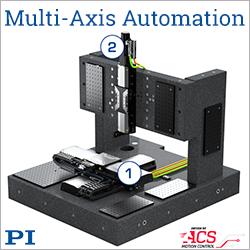DIY Drones Amateur UAVs
STMicroelectronic's iNEMO Body-motion Suit
MAVRK Modular Hardware Prototyping Platform
Microsoft Announces Kinect for Windows And New SDK At CES
3D Home Printer From 3D@Home
Low-cost Spectral Imaging Solution
Flight Assembled Architecture
FMC Technologies to Increase Ownership of Schilling Robotics to 100 Percent
Stratasys Offering Monthly Lease for 3D Printers
Aldebaran Robotics Updates Their NAO Robot
Micro-expression Detection Software
Harvard-designed Soft Robot
FroboMind
Boeing Unmanned Little Bird
IMAV 2011
Records 1591 to 1605 of 1665
First | Previous | Next | Last
Featured Product

PI USA - Multi-Axis Automation
Robotics and Automation - Featured Company

